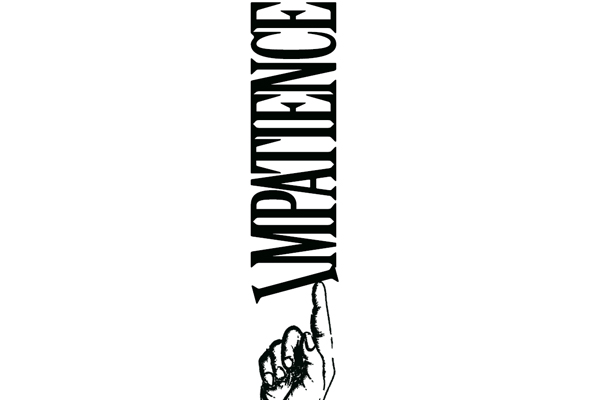
The arrival of nudge theory on the policy scene has not been received with universal enthusiasm. Groups of academics and commentators have levelled harsh criticisms — political, practical and ethical — against the use of behavioural insights in public policy. In Britain, the libertarian blog Spiked declared ”war on nudge.” And there are stirrings in public policy literature against nudge theory’s promotion of ”libertarian paternalism,” the concept that individual liberty is not endangered when people are nudged toward making choices that serve their own best interests. To critics, nudges often do work by manipulating personal choice, thereby putting the public at the mercy of evil-minded technocrats.
Richard Thaler and Cass Sunstein, authors of Nudge, the foundation text on nudge theory, were aware of these anti-nudge arguments. But they did not see them as obstacles to using nudges in practice. They contend that subtle features of decision-making contexts will always influence our choices, whether we like it or not, and that manipulating these choices in ways that preserve individual freedom while promoting prosocial behaviour is an admissible option in public policy-making. Yet the authors are aware of the risk that nudge could be used in ways that do not always serve the public interest. In my own autographed copy of Nudge, Thaler has signed with the phrase ”Keep nudging for good.”
His warning shows that the notion of nudge is not married to his and his co-author’s more positive concept of libertarian paternalism. As the many marketing tricks used to fool us into buying stuff we don’t need show, it is possible to nudge ”for bad” or ”for profit” as well. A classic example is the question served to any customer at McDonald’s: ”Should that be a large meal?” Adding complexity, even if one ”nudges for good,” certain subtypes of nudges influence behaviour without people even noticing it. This enables policy-makers to nudge us toward prosocial behaviour change in ways that may preserve freedom of choice as a matter of principle, but not as a matter of practice.

The classic example of nontransparent manipulation is the doctor who uses behavioural insights in presenting medical treatment options to a patient. If the doctor is trying to steer the patient toward choosing a particular treatment, she might describe the procedure as having an 80 percent chance that 90 of 100 patients will survive. If she is trying to discourage the treatment, the doctor could describe it as having 80 percent risk that 10 out of 100 patients will die. While patients are free to choose as they like — in principle — the doctor knows that she can influence the choice by the way the odds of survival are presented. This example shows how nudging behaviour is vulnerable to being used in a paternalistic fashion.
Recognition of this is perhaps what explains Thaler and Sunstein’s struggle at the end of Nudge to add some ethical considerations and constraints to align the nudge approach with the gist of libertarian paternalism. The goal of nudges, they argue, should be consistent with the general preferences of citizens, and nudges should be devised in ways that are publicly defensible. ”If a government adopts a policy that it could not defend publicly, it stands to face considerable embarrassment, and perhaps much worse, if the policy and its grounds are disclosed,” they write. ”The government should respect the people whom it governs, and if it adopts policies that it could not defend in public, it fails to manifest that respect. Instead, it treats its citizens as tools for its own manipulation.”
Still, it is hard to see how this prevents the nudge approach from collapsing into paternalism. After all, if nudges can be employed to influence our choices without us noticing, how can a case be made for anything other than unfettered preservation of choice?
The manipulation of choice has thus been the main critique levelled against adopting the nudge approach in public policy. Opponents argue that the concept of libertarian paternalism is an oxymoron because the nudge doctrine is merely paternalism in disguise. They contend that the psychological mechanisms being exploited work best in the dark, and that the effects of nudges are likely to disappear if nudges become transparent. Furthermore, they argue that nudging can encourage abuse of power by unelected technocrats.
My research has shown that such criticisms systematically ignore the complexity and diversity of the insights from behavioural economics and cognitive psychology that nudges are based on. Take the example of the successful pension plan Save More Tomorrow, which was designed based on the behavioural insights of Thaler and UCLA professor Shlomo Bernatzi. To circumvent the loss-aversion bias that blocks many employees from choosing the optimal pension savings program, Save More Tomorrow allows employees to join a program that allocates a portion of future salary increases to retirement savings. In contrast to the example above, where the doctor’s treatment preferences are a hidden agenda, employees in the original design of the program join the pension scheme voluntarily, well aware of the psychological elements of the program’s design. Such transparency has no effect on the efficacy of the program. Indeed, an understanding of how it works is part of what creates the willingness to participate.
Criticisms rooted in a general claim that nudges work by the manipulation of choice are based upon a logical fallacy. They extrapolate from a single or limited number of examples of nontransparent nudges — like that of the doctor presenting treatments — to cast all other nudges as being more or less identical in how they work. This cherry-picking argument ignores the significant portion of related cases and data that contradict that position. The criticism has another blind spot in that it fails to notice that the traditional public policy tool of regulation is often nontransparent as well: Who among us is capable of knowing what taxes apply to every good in a supermarket?
Policy-makers should still worry about the misuse of behavioural insights in public policy. But it is important to note that this potential for abuse is not particular to nudges; it applies to any regulation that seeks to achieve a certain kind of behaviour. Nudges, like regulations, are intentionally applied in the knowledge that they will tend to affect behaviour.
Thaler and Sunstein recognize this. If one reads Nudge carefully, it is apparent that the authors argue for a principle of transparency, in which citizens are able to recognize the means and intentions with which they are being nudged. And nudges that satisfy this criterion suffer only if citizens do not agree to the ends or means. By maintaining transparency in the goals and the methods of nudges, policy-makers can avoid the moral pitfall of paternalism. In so doing, they can apply nudges without fear of being paternalistic, and live up to Thaler’s admonition to ”nudge for good.”
Photo: rudall30 / Shutterstock







